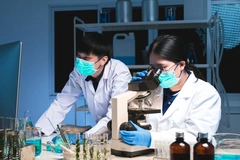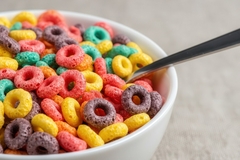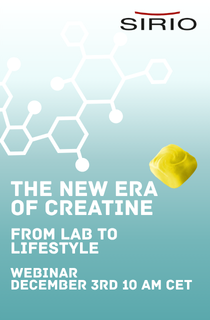TeakOrigin and Streetbees collaborate to improve nutritional reporting and reveal consumer demands
21 Sep 2020 --- The nutritional value of food may not be accurately reported by nutrition apps and supermarkets claims. Data intelligence companies TeakOrigin and Streetbees have partnered to begin data-driven research that more accurately assesses foods’ nutritional value and its relationship with consumer decision making. Their research findings will be accessible to users via an app, set to arrive later next year.
“The data currently available around produce is inaccurate. TeakOrigin provides a whole new level of understanding and power to make real changes,” Tugce Bulut, CEO and founder of Streetbees, tells NutritionInsight.
She highlights that providing businesses with more accurate information on nutritional values of fresh produce will empower them to “actually improve their products.”

“United with the data from Streetbees’ users – what they really want from their food and what drives them – it creates a unique opportunity for brands to meet the real needs of the consumer,” she continues.
 Streetbees’ research found that 75 percent of consumption choices are driven by individuals’ immediate context and mood.By applying machine learning and advanced natural language processing technology to the data, Streetbees uncovers “not just what people do, but also why they do it.” This helps TeakOrigin better understand consumers’ decisions when buying and preparing the foods it analyzes.
Streetbees’ research found that 75 percent of consumption choices are driven by individuals’ immediate context and mood.By applying machine learning and advanced natural language processing technology to the data, Streetbees uncovers “not just what people do, but also why they do it.” This helps TeakOrigin better understand consumers’ decisions when buying and preparing the foods it analyzes.
The Streetbees team will begin collecting and analyzing produce bought from Tesco, Sainsbury’s, Morrisons, Waitrose, Asda, Amazon Fresh, Aldi, Lidl and Ocado in the UK. “However, the hope is to extend the research into multiple countries,” Bulut hints.
Outdated nutritional information?
A standard way to measure nutrition sounds like something that should already exist in 2020 but the reality is “it doesn’t yet,” says Brent Overcash, CEO and co-founder of TeakOrigin.
“People are making choices about the foods they eat every day unaware of whether what they are paying for is healthy or if the diet app that they are using is based on nutritional labeling data that is 20 years old.
“It’s a problem we decided we can fix for both buyers and sellers of food that benefits every constituent in the food ecosystem, from farmers all the way to consumers.”
Furthermore, Bulut adds that digitalization is “not new” – neither for the food and beverage industry, nor for market research or consumer insights. “However, the current situation has accelerated the need for it, particularly when it comes to consumer intelligence,” she underscores.
Translating research into functional digital tech
Initially, a free-to-use website called TeakOriginGuide will share weekly insights with consumers to exemplify how well a specific food or retailer has delivered nutrition over the past week.
“TeakOrigin is testing the site now and will begin to actively promote it in January in the UK, US and Singapore. From this, it will launch an app that will make it more convenient for consumers while they’re out shopping or eating,” TeakOrigin’s co-founder Greg Shewmaker also shares with NutritionInsight.
 The app aims to engage with consumers on what they are eating and why.The goal is to make these insights available through retailer websites, apps, and in-store technologies and communications.
The app aims to engage with consumers on what they are eating and why.The goal is to make these insights available through retailer websites, apps, and in-store technologies and communications.
Next to building this “dynamic repository” of nutritional data, Streetbees will also leverage its chat-style app and Always ON platform to understand the purchase and consumption drivers for fresh produce, at the moment of choice and in consumers’ own words.
Biggest nutritional misconceptions
Streetbees will use TeakOrigin’s technology to scan thousands of different foods monthly, including apples, avocados, bananas, blueberries, grapes, spinach, strawberries, tomatoes, pears and oranges. Data will be collected and then shared weekly with TeakOrigin.
TeakOrigin chose to start with produce for two primary reasons. “Some of the biggest misperceptions about how much nutrition we’re actually eating are found in these foods. So we wanted to dig into the fruits and vegetables that were most well-known around the world to find out what was really going on,” Shewmaker explains.
Moreover, produce is “by far the biggest category of global fresh food consumption,” the spokesperson continues, making it “a logical place” to start from an opportunity standpoint.
The plan is to then move on to create models for meats, fish and seafood, dairy, oils, grains and wine.
Nutrition transparency meets digital tech
Throughout the past few months, there have been heightened calls for more transparency, with calls hailing from the heart health sector to infant formula and junk food.
Meanwhile, digital technologies and artificial intelligence (AI) breakthroughs in nutritional applications mean that consumers can control their health more than ever. Notable examples include wearable technologies for weight management and digital platforms for monitoring gut health.
“The [digitalization] need goes far beyond the data collection. What’s more important right now is that machines are needed to understand that data and provide actionable insights. Without that, we can collect as much data as we want, but it doesn’t mean we will know what it means,” Bulut concludes.
By Anni Schleicher
















